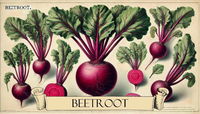
My Gustatory Day Trivia Quiz
Origins of Various Foods
I spent the day buying fresh ingredients from my grocery store. This was only possible because humans have moved them from one place in the world to another. Match the foods with their correct native homes. (Click the images for a closer look!)
by trident.
Estimated time: 3 mins.











